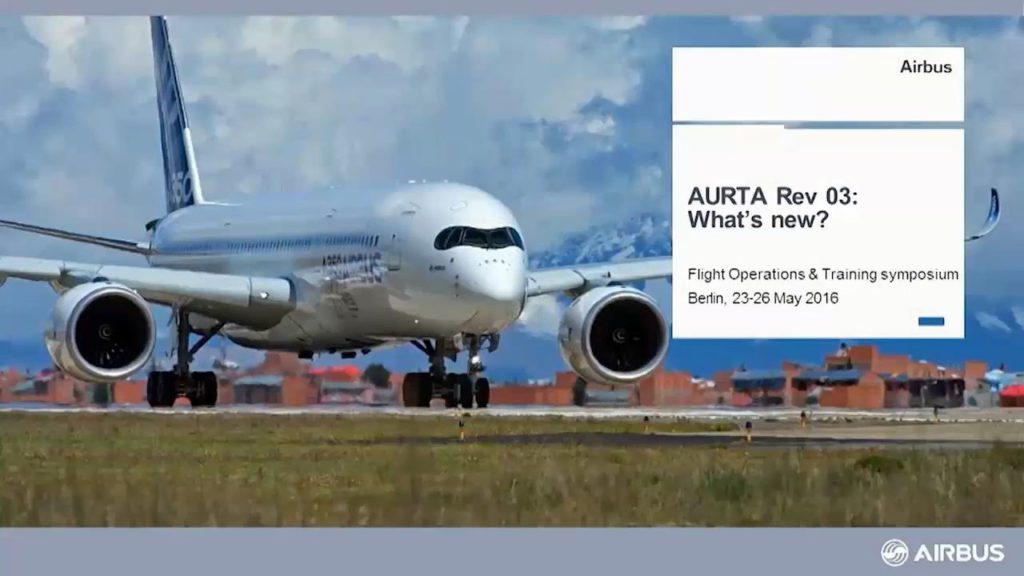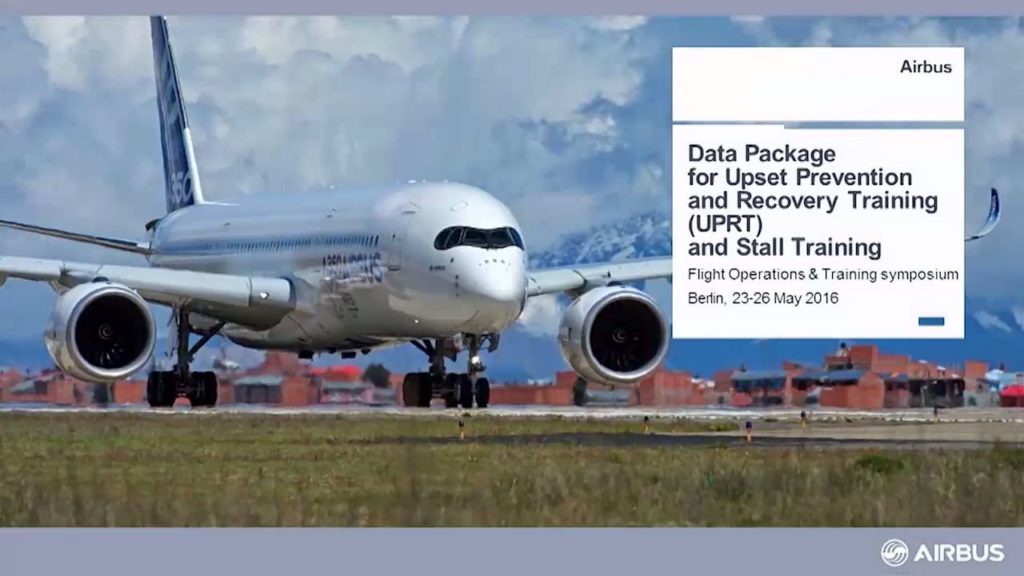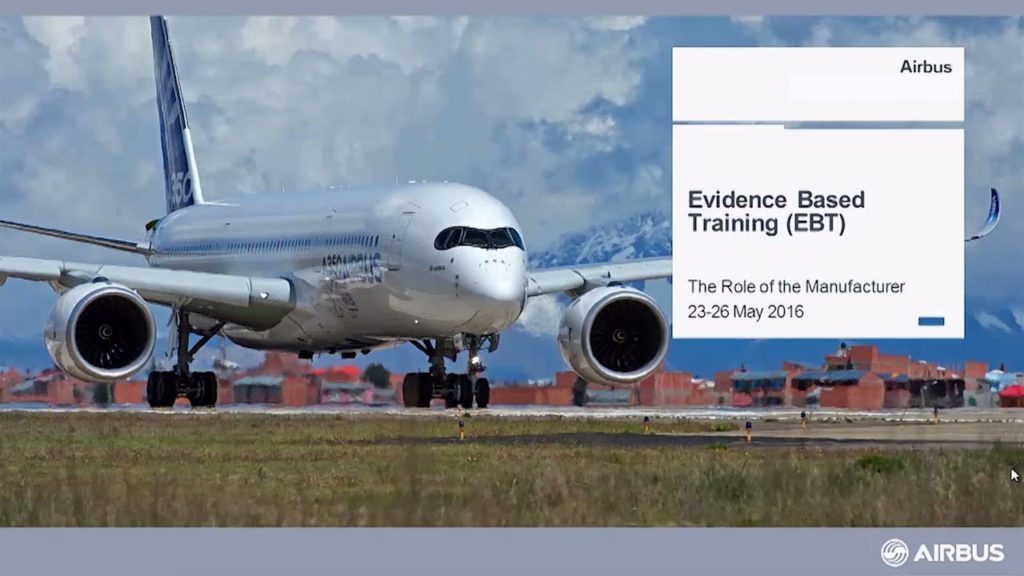Air Data – Update on Procedures and Enhancements

Review of the latest operational enhancements related to Airspeed and Angle Of Attack subjects, including new upcoming functions.
How to use ?
Three Navigation methods
AURTA Rev 3 What’s new

Why a Revision 3 to the Upset Training Aid? What is different? How do stall recovery procedures relate to upset recovery recommendations?
Data Package for UPRT-STALL

Guidance and Regulations applicable to Flight Simulation Training Devices are being revised, in order to include capabilities for Upset Prevention and Recovery Training. This presentation indicates how Airbus plans to address the modifications listed in the recent Notice for Proposed Rule Making (NPRM) of the 14 CFR Part 60 Change 2 in terms of Data […]
Evidence Based Training – The role of the manufacturer

Evidence Based Training is the biggest paradigm shift in flight crew training in many years. EASA allows EBT as an alternative to recurrent training since 2016. The presentation highlights the latest regulatory development in EBT and describes the role of Airbus as OEM in this context.
GBAS Landing System – GLS

For most of the pilots, the ILS approach has become a routine in their daily operations. Besides, GPS operation is becoming the standard in civil aviation. On the other hand, for airport operators, ILS maintenance is costly and the GBAS landing System can play a cost saving key role. This is why GLS approaches, based […]
SMOKE FIRE from a LITHIUM BATTERY in the Cockpit

This presentation provides the key points to deal with smoke/fire from a lithium battery in the cockpit.
Preventing Falls from Height
Falling from an aircraft can cause serious injuries to people.Specific safety equipment is installed on Airbus aircraft, and when used correctly, can prevent falls from height. This article describes the available safety equipment for Airbus aircraft and recalls the basic safety precautions that will help to avoid falling from height injuries to everyone on the […]
Troubleshooting Airframe Vibrations
As moveable structural components such as control surfaces and landing gear doors age, wear of hinges and actuators can sometimes lead to airframe vibrations. These vibrations can cause noise and physical discomfort in the passenger cabin.To prevent further deterioration of components, the cause of vibration should be quickly identified and removed. For this, maintenance personnel […]
Progress to Pinpoint an Aircraft’s Position
There are currently around 33 million commercial flights a year and this figure is expected to double in the next 15 years. An aircraft arriving safely at its destination, and within a predictable time, is an expectation of both its crew and passengers. A growing number of apps are also available to the public that […]
